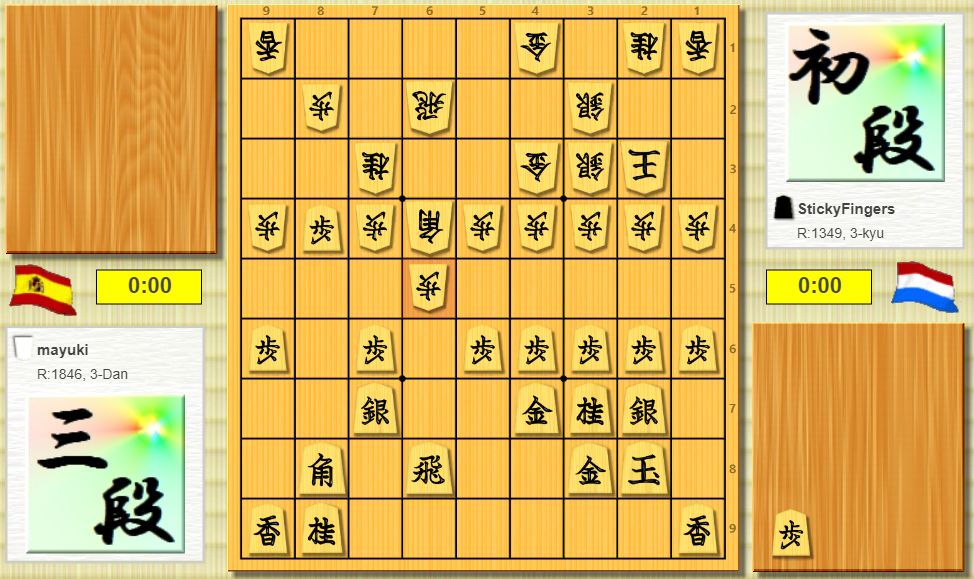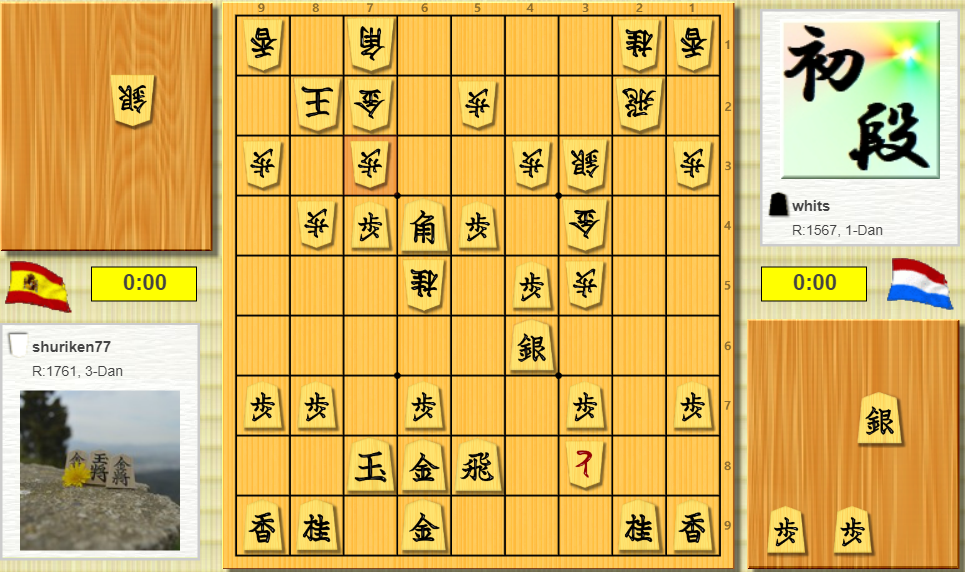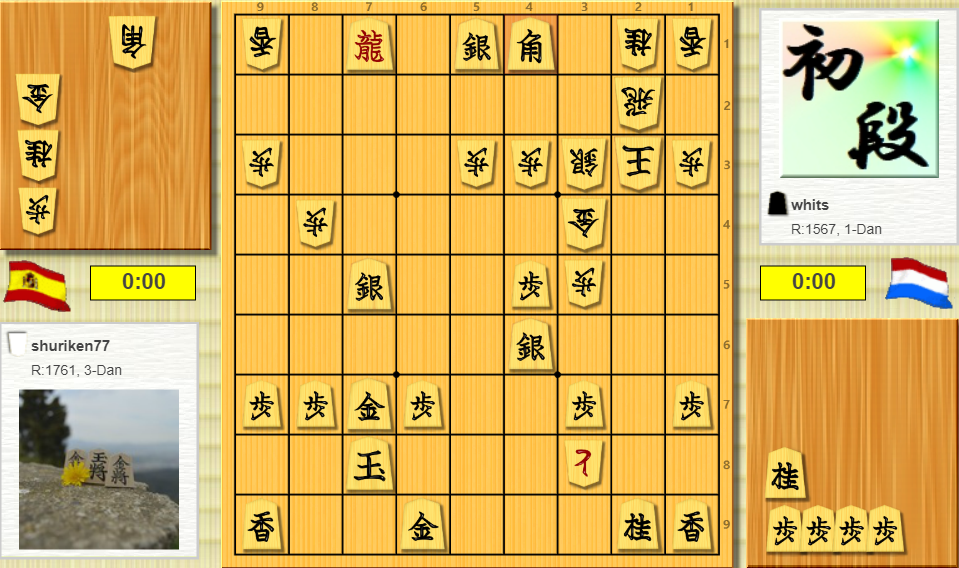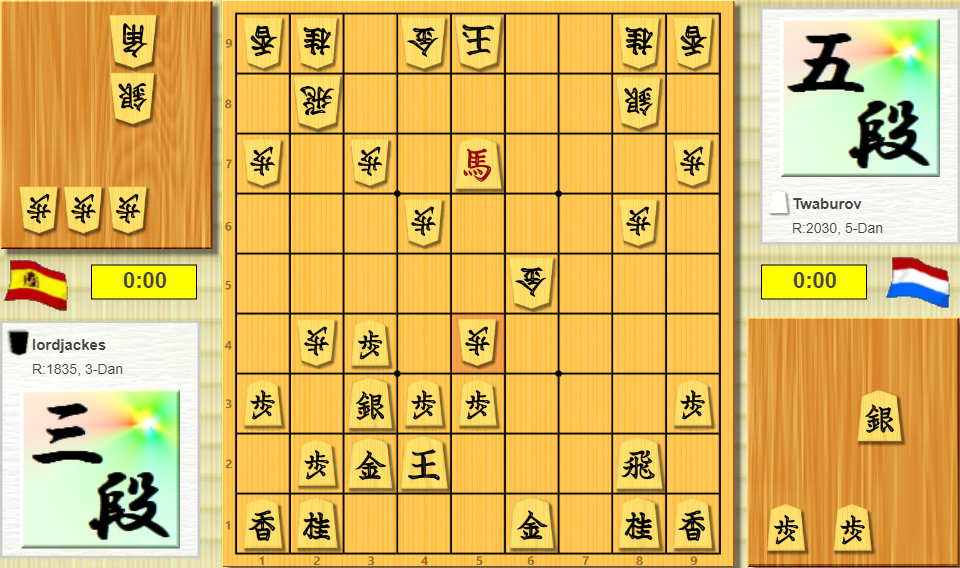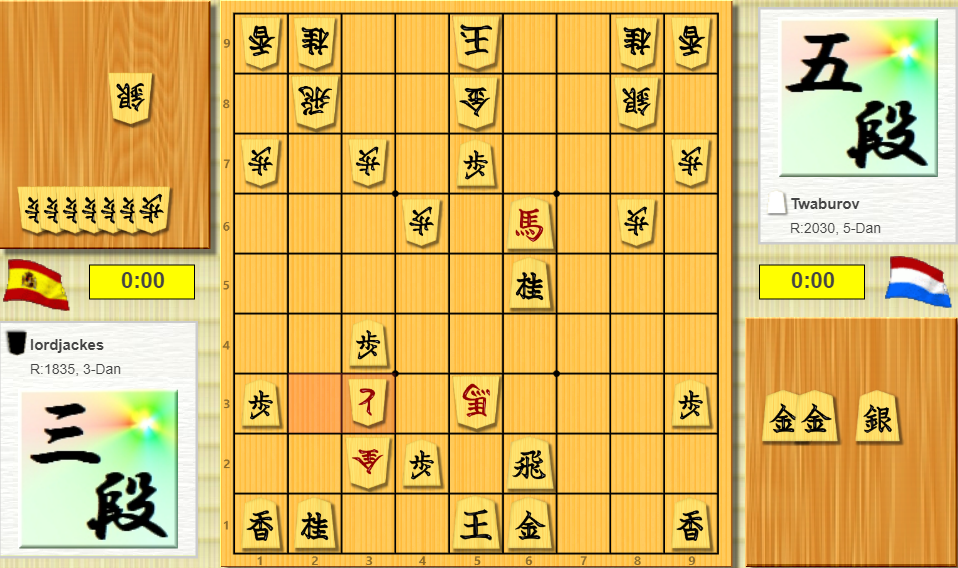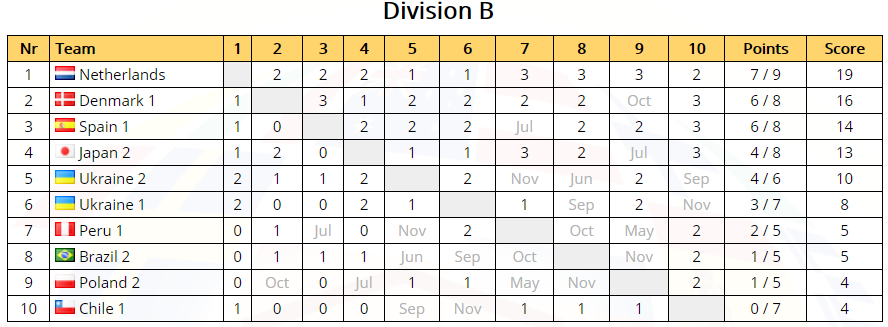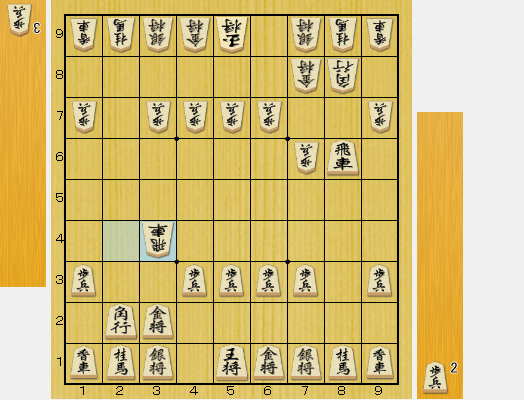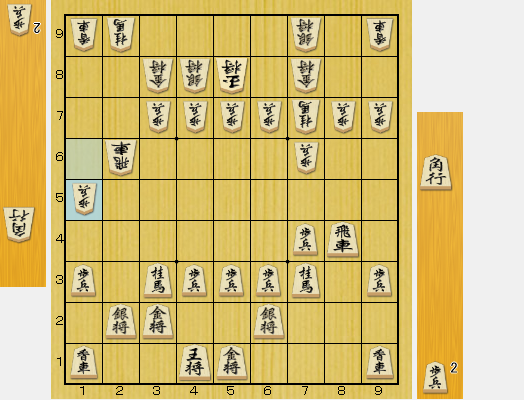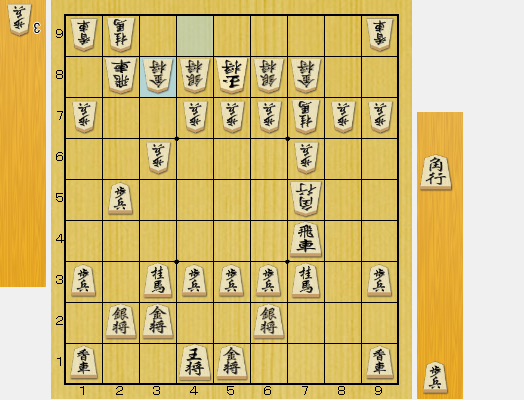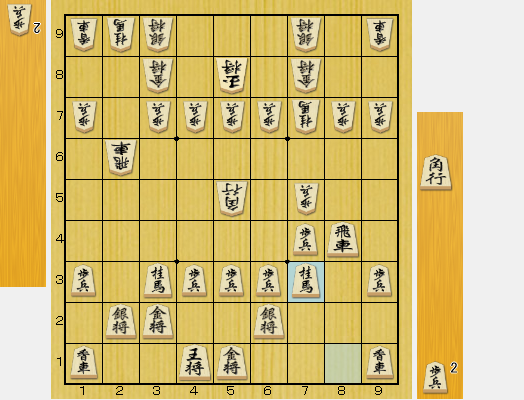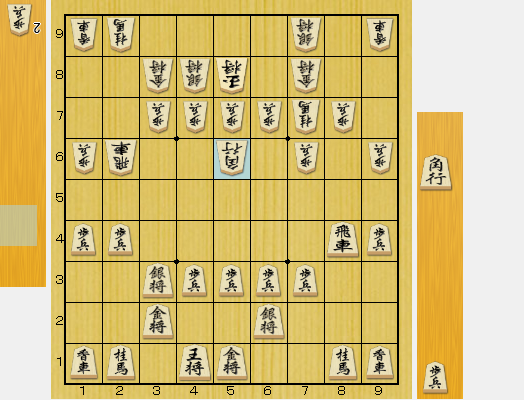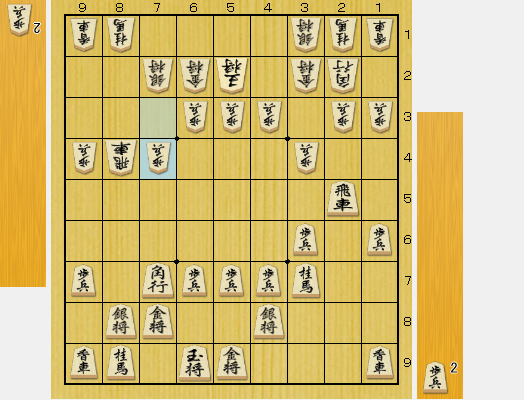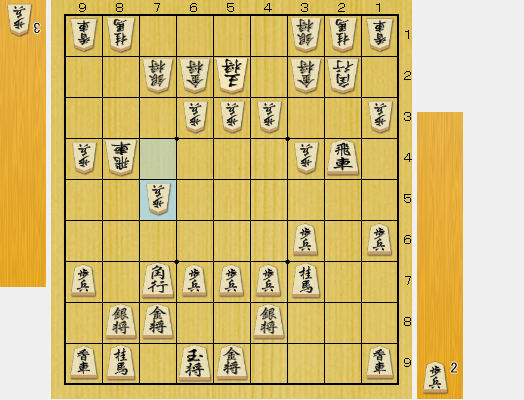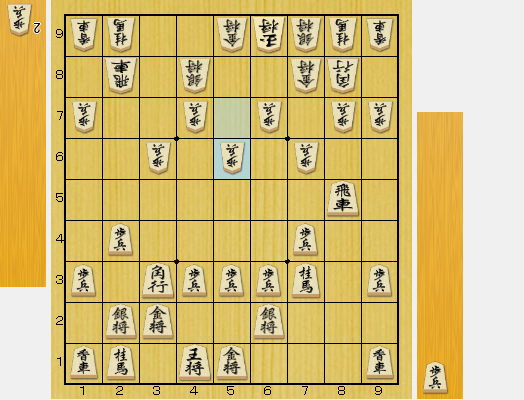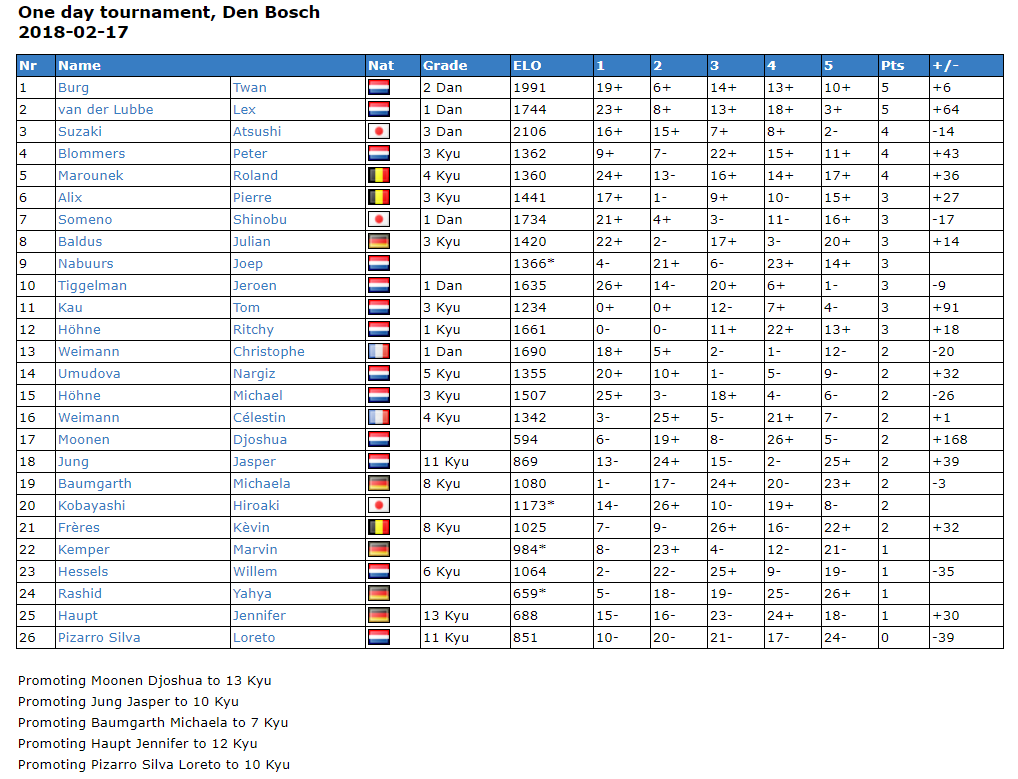Setting up the software
The first thing to do is to make sure you have ShogiGUI running with an engine. In an article of Mr. Takahashi it is described how to do this.
If you get the Gikou engine to work, great. This is one of the best engines. If you want to perfectionize, please check this or this article about how to install an even stronger engine. But those who are not comfortable with advanced computer magic rest assured: Shogi GUI with the default book and Gikou engine is already a wonderful tool! After starting the engine and opening the default book, it will look like this:
Getting your game in
Of course you can start moving around from the initial beginning and analyze shogi like this, but you might want to load a game in to analyze this with the engine. This can be done in a couple of ways, also depending on where you get it from. In 81Dojo there is a Kifu menu where you can save it as KIF or copy it to the clipboard. Then you can respectively load it in ShogiGUI using File-Open or paste it with Ctrl+V or Edit-Paste Notation. In case you played your game on ShogiWars, you can load the game using shogi-extend.com search by your username, then click on the ‘+’ button on the right in the middle, then you can paste inside ShogiGUI.
Understanding ShogiGUI
So there a lot of numbers, moves and variations, but how to interpret those?
Let’s focus on the book first. If the position is still in book, under book the moves are listed which were played before. Under Games you can see how often it was played, and under Winning% how succesfull this move was, from the perspective of which colour plays this move. So e.g. the move S57 scored 3 out of 5 wins. The move I played was P86, so here I diverged from the book moves.
Under the consider tab you can see the candidates suggested by the engine. There is also some information about thinking depth and thinking power, but those are not so relevant. In this case I have 4 candidates, and they are sorted by how strong the engine thinks the moves are:
1.S57(231)
2.B77(231)
3.L98(210)
4.P36(158)
The score is always for Sente, so (231) means that Sente is a bit better.
From the variations it seems, that instead of P86, which signals a Tower Mino, the engine prefers to make an Anaguma with moves like B77, K88, L98, K99, S88, G68, G78, G79.
That my move P86 didn’t appear here doesn’t mean it is bad. I think Tower Mino is perfectly playable in this type of positions, in just happens that the engine prefers the Anaguma castle. You can get an idea of how good or bad a move is by checking the evaluations one move later:
Here the engine recommends playing G41-52 for Gote, with an evaluation of (51). It means that Sente is still a bit better according the engine. An evaluation difference of 180 points is actually not that big, and this case it can be explained by a certain preferene of the engine from one castle over the other. Let’s look at a more critical example.
Improve your game by analyzing with the engine
In this position the confrontations have begun. I have a Tower Mino with 4 generals, and initiated the battle with Knight and Bishop. Gote has a nice High Mino and countered in the centre. I can catch the Silver here with P*56, but saw that my opponent could create counter play with P*66 G57 Nx65 etc., sacrificing the Knight. I thought it would be smart to insert P24 here, so later my Rook could dash forward.
The engine however indicates that the evaluation would drop from (969) to (0), compared to the highest recommendation, which is the direct P*56. A difference of about 1000 points can be considered a mistake.
Understanding and improving
So if something like this happens it is very understand to understand:
“Why was my move not as good as the best move”?
To understand this, it is a good idea to following for both lines the moves that the engine recommends first. For example, we can look at the line that is recommended by the engine, the immediate P*56. Looking a bit further, this indeed gives Sente a nice advantage. But isn’t including P24 Px24 a nice improvement over this line? After putting P24 on the board, it turns out that Px24 was not forced:
Looking at the suggestions for Gote, we don’t see Px24 in the first 4 moves. In fact, the 4 moves suggested all ignore the Px23+ threat and shift focus in the centre. As it turns out, P24 was played too late! When analyzing these lines, it indeed turns out that Gote has a nice control in the centre, and that Px23 will not be that severe. This reminds me of Hidetch’s words in the Glance Series: Play P24 before it’s too late. Too late means that it can be ignored and Ranging Rook side uses the time instead to counterattack in the centre. It also reminds me of Aono’s chapter in Better moves for Better Shogi: “Eradicating Reflex moves”. Sometimes a move looks forced, but it is important to always think if it is really forced and whether there is a better move. You can of course boost your progress even more when studying such books in parallel to analyzing your own games!
For the full game see this 81dojo-link.
Tips and tricks
-Save your analysis for future reference.
-If you notice the engine plays in a certain way in the opening, try it out in a real game!
-Try to improve over common joseki by using engine’s recommendations. Try to understand the differences by analyzing and playing.
-When understanding something, you can add a comment in ShogiGUI. It will help to understand and remember!
-Use an external back-up from time to time for the files you create in ShogiGUI.
-Don’t get blind by looking at the numbers only, always try to understand why a certain move is good or bad and check the moves yourself before playing them.





